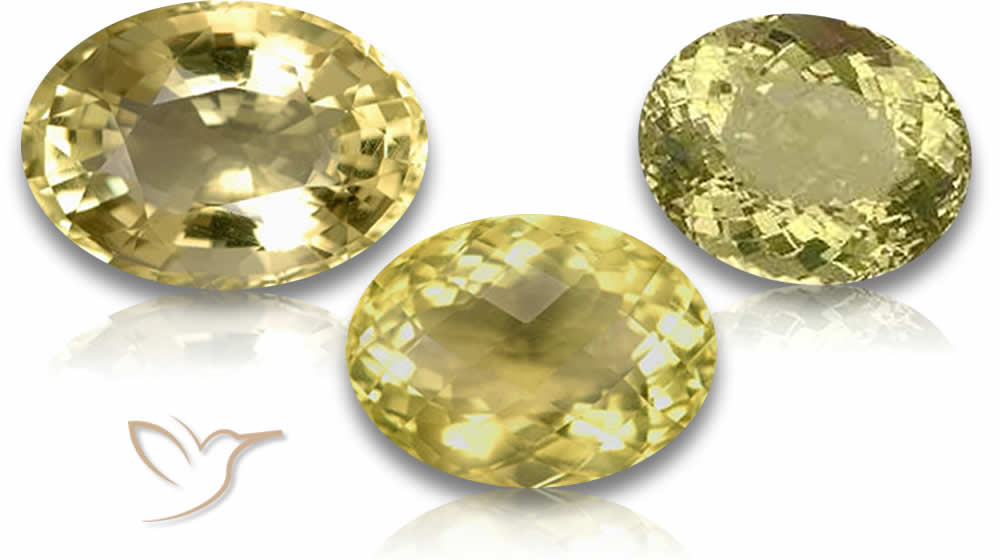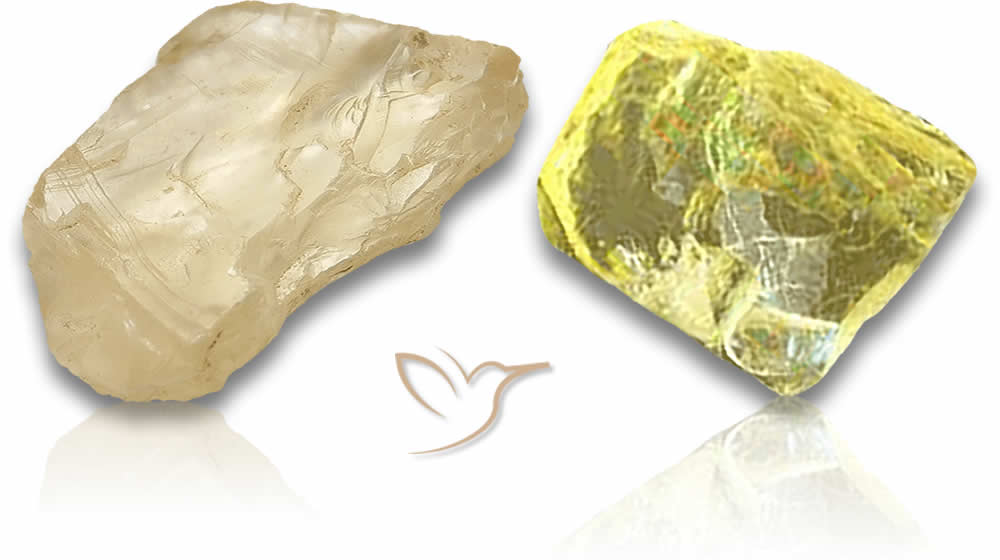Orthoclase Gemstone: Unveil Its Natural Beauty

Orthoclase is a beautiful and versatile gemstone known for its striking clarity and range of colors, from colorless to pale pink, yellow, and brown. A member of the feldspar mineral group, Orthoclase gemstone is valued for its unique sheen and impressive hardness, making it an excellent choice for both fine jewelry and collectors.
With its history of use in ancient carvings and its appealing aesthetic, Orthoclase continues to intrigue gem enthusiasts around the world. In this article, we will explore the properties, origins, and uses of Orthoclase, shedding light on why this gemstone remains a fascinating and cherished treasure.
Embark on a journey of timeless elegance as we explore the unique characteristics, vibrant colors, and symbolic meanings of Orthoclase Gemstone.
Key Takeaways
- Orthoclase is a mineral used in jewelry production.
- Orthoclase comes from the Greek words "ortho" meaning straight or upright and "klas" meaning break.
- Orthoclase is naturally beautiful, unique and mesmerizing.
- Orthoclase has various symbolic meanings.
- Orthoclase is also known as K-spar.
Healing Properties of Orthoclase
Orthoclase is a powerful crystal with numerous healing properties that can positively impact one's life in various ways. Here, we will explore some of the benefits that this remarkable gemstone can offer.
Emotional Balance and Healing
Orthoclase has been known to promote emotional balance by helping to release negative emotions and facilitating healing of emotional wounds. It can bring forth a sense of inner peace and calmness, and help one develop a positive outlook on life.
Physical Healing
Orthoclase is also believed to possess physical healing properties. It is said to support the immune system, improve digestive issues, and promote healthy skin. Additionally, orthoclase may help to relieve migraine headaches and reduce inflammation.
Spiritual Healing
Orthoclase can aid in spiritual healing by enhancing meditation and intuition. It can help to strengthen one's spiritual connection and attune them with their higher self. Furthermore, orthoclase can assist in accessing psychic abilities and developing a deeper understanding of the spiritual realm.
Enhanced Clarity of Thought
Orthoclase is known to enhance mental clarity, enabling one to think more clearly and make sound decisions. It can improve focus, memory retention, and mental agility, making it an ideal crystal for students, professionals, and anyone seeking to enhance their cognitive abilities.
Overall, the healing properties of Orthoclase are truly remarkable, making it a sought-after gemstone for those wishing to improve their physical, emotional, and spiritual well-being.
Vibrant Colors of Orthoclase Gemstone
Orthoclase mesmerizes with its vast spectrum of colors, ranging from delicate pinks to warm yellows. Each color represents a different variation of this captivating gemstone, imbued with its unique symbolism and properties.
Orthoclase color is determined by its mineral composition and can vary depending on the gem's origin and conditions during formation.
Pink Orthoclase
Pink Orthoclase is a popular choice for jewelry due to its feminine charm and soothing energy. Its soft hues evoke feelings of love, compassion, and emotional healing, making it a favorite among those seeking emotional balance.
Yellow Orthoclase
Yellow Orthoclase emanates warmth, positivity, and creativity. Its sunny shade resonates with the energy of the sun, infusing the wearer with vigor and enthusiasm. It also enhances clarity of thought and decision-making abilities.
Green Orthoclase
Green Orthoclase is symbolic of growth and abundance, both in wealth and personal growth. It is also associated with the heart chakra and is believed to promote emotional healing, compassion, and harmony in relationships.
White Orthoclase
White Orthoclase reflects purity, clarity, and innocence. Its light hues are calming and soothing, easing the stress and anxiety that plague modern-day life. It is also believed to enhance spiritual awareness and intuition.
Whichever color variation you choose, Orthoclase is a true marvel of nature, with each color imbued with symbolism and energy that resonates with the wearer.
Orthoclase Gemstone Jewelry: Timeless Elegance
When it comes to jewelry, Orthoclase is a prime choice, thanks to its timeless elegance. Crafters create exquisite and remarkable pieces that stand out with high-end designs and exceptional levels of craftsmanship. You can choose from many varied items, including intricate rings, dazzling necklaces, and elegant pendants.
Types of Orthoclase Gemstone Jewelry
| Jewelry Type | Description |
|---|---|
| Rings | Orthoclase Gemstone rings come in various designs such as solitaires, three-stones, or halo settings and fitting snuggly against your ring finger perfectly. |
| Necklaces | Necklaces come in different lengths and styles, and many designs have additional gems or stones to embellish the aesthetics. |
| Pendants | Orthoclase Gemstone pendants feature a solitary gemstone or are part of a distinctive, more elaborate piece of jewelry, making it a perfect centerpiece. |
Orthoclase: Past and Present
Orthoclase has a long and fascinating history. It has been used by many civilizations over the centuries and has played an important role in their cultures and customs.
Ancient Egyptians, for example, believed that the gemstone could help them communicate with the divine. They used it in their religious ceremonies and often placed it in tombs to guide the spirits of the deceased into the afterlife.
The Romans also prized Orthoclase, using it as a decorative item in their homes and as a symbol of wealth and power. They believed that the gemstone had healing properties and could protect them from harm.
Today, Orthoclase continues to captivate people around the world. Its unique beauty and symbolism make it a popular choice for jewelry and decorative items. Many people also value its healing properties and use it in alternative medicine practices.
Whether you are drawn to Orthoclase for its history, symbolism, or aesthetic appeal, this gemstone is sure to continue to fascinate and inspire for generations to come.

Orthoclase: Durability and Clarity
When it comes to gemstones, not only is beauty important, but so is durability. Orthoclase is a perfect example of a gem that is both visually stunning and tough enough to stand the test of time. This stunning gemstone boasts a remarkable hardness of 6 to 6.5 on the Mohs scale, making it an ideal choice for jewelry that needs to withstand everyday wear and tear.
Another impressive characteristic of Orthoclase is its clarity and luster. With a vitreous to pearly luster and generally transparent to translucent appearance, Orthoclase stone captivates the viewer with its radiant glow. The gem's optimal clarity allows for the full spectrum of color to be seen, further enhancing its natural beauty.
It's worth noting that Orthoclase can be vulnerable to damage from harsh chemicals and extreme temperatures. However, with proper care and maintenance, this gemstone is sure to maintain its clarity and durability for years to come.
Orthoclase: Endless Uses
The Orthoclase Gemstone is a versatile precious stone that has proved its worth in various fields over the years. In this section, we will explore the extensive range of uses of this beautiful gemstone.
Decorative Purposes
Orthoclase gemstone is used to create stunning decorative items such as vases, bowls, and other home decor objects. The gem's unique properties give it a magical aura, making it a popular choice for those who want to add a touch of luxury and elegance to their living spaces.
Jewelry Making
Orthoclase gemstones are prized for their distinctive beauty. The gem's varying colors provide jewelry makers with a diverse range of gemstones to create unique and captivating jewelry. The gem's durability, combined with its optical properties, make it a perfect choice for fine jewelry such as engagement rings, bracelets, and earrings.
Healing and Spiritual Purposes
Orthoclase have been used for centuries because of their healing properties. The gemstone is believed to promote emotional balance and encourage clear thinking, helping to reduce anxiety and stress. Additionally, this stone is believed to aid in spiritual growth and self-discovery, making it a valuable tool for meditation and self-reflection.
Gemology
Orthoclase have significant gemological properties that make them valuable in the field of geology. These properties include its unique crystal structure, hardness, and cleavage. Orthoclase are often used to identify the age of rocks and minerals in geological studies.
In conclusion, Orthoclase is a precious stone with endless uses. Its versatility makes it an excellent choice for various purposes, including decorative, jewelry making, spiritual, and gemological purposes.
Conclusion
As we conclude this article on Orthoclase, we hope to have unveiled its natural beauty and captivated you with its unique characteristics and symbolic meanings. From its healing properties to the vibrant colors it displays, this gemstone possesses elegance and versatility that go beyond its aesthetic appeal.
Orthoclase durability and clarity make it a popular choice for jewelry, and its historical significance and cultural symbolism continue to fascinate people even today. Furthermore, the gem's endless uses in various fields showcase its practical applications and gemological properties.
Embrace the allure of Orthoclase and immerse yourself in its captivating world of timeless elegance. Whether you choose to wear it as jewelry or utilize it for its practical purposes, this gemstone is sure to leave a lasting impression.
FAQ
What is an Orthoclase Gemstone?
Orthoclase is a type of feldspar mineral that is valued for its natural beauty and unique characteristics. It is known for its vibrant colors, durability, and versatility.
What is the meaning behind Orthoclase?
Orthoclase is believed to symbolize purity, harmony, and emotional balance. It is said to bring about inner peace, clarity of thought, and positive energy.
What are the healing properties of Orthoclase?
Orthoclase is believed to have various healing benefits. It is said to promote emotional healing, enhance creativity, and improve self-confidence. It can also help alleviate stress, anxiety, and promote restful sleep.
What colors are available in Orthoclase?
Orthoclase comes in a range of colors, including pink, peach, yellow, white, and colorless. Each color has its own unique symbolism and beauty.
What types of jewelry can be made with Orthoclase Gemstone?
Orthoclase Gemstone is commonly used in various types of jewelry, including rings, earrings, necklaces, bracelets, and pendants. Its natural beauty and durability make it a popular choice for creating exquisite and timeless pieces.
What is the historical significance of Orthoclase?
Orthoclase has a rich history dating back centuries. It has been used by different civilizations for its beauty and symbolic meaning. It has been found in archaeological excavations and is known for its role in ancient cultures.
How durable is Orthoclase?
Orthoclase is known for its durability and hardness. It has a rating of 6-6.5 on the Mohs scale, making it suitable for everyday wear. However, it is important to protect the gemstone from harsh chemicals and excessive force to maintain its beauty.
What are the uses of Orthoclase?
Orthoclase has endless uses. It is widely used in jewelry making, decorative objects, and even in the field of gemology for research and identification purposes. Its gemological properties and versatility make it a valuable gemstone in various industries.

